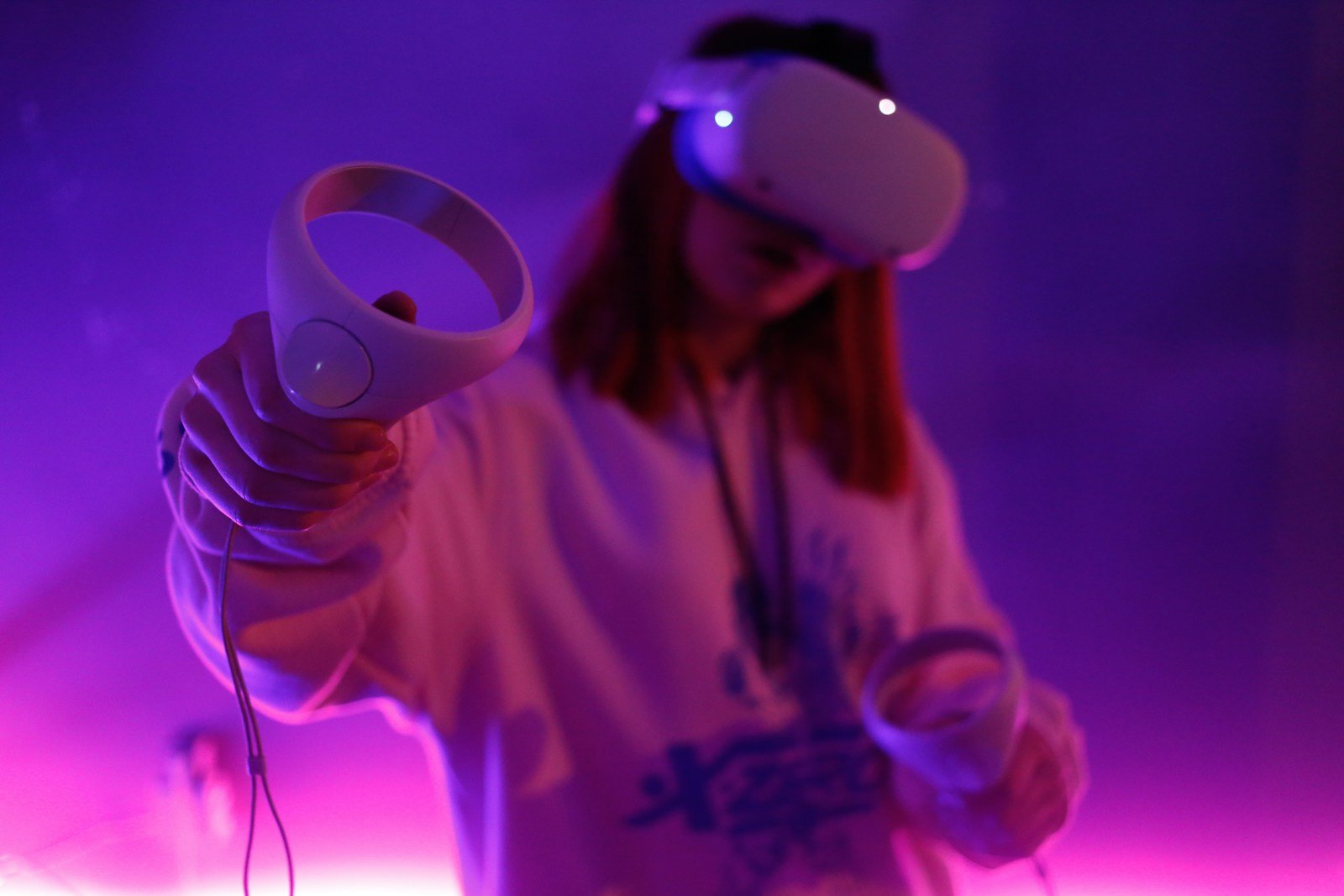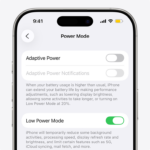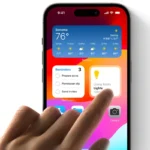Virtual reality has come a long way in recent years. With more budget-friendly options now available, you don’t need to spend thousands to enjoy VR games and experiences. The Meta Quest 3S at $299 is currently the best budget VR headset for most people in 2026.
Finding the right affordable VR headset means looking at what matters most to you. Some cheap headsets offer great visuals but limited tracking. Others might cost less but need a gaming PC or console to work. Each option has its own strengths and fits different needs and budgets.
1. Meta Quest 3S
The Meta Quest 3S has quickly earned its place as the top budget VR headset in 2026. Priced at just $300, it offers an affordable entry point into virtual reality without sacrificing essential features.
This headset brings mixed reality capabilities with color passthrough cameras, a significant upgrade from previous budget models. Users can now experience both virtual reality and see the real world through the device with decent clarity.
The Quest 3S features improved graphics compared to the Quest 2, making games and apps look better. Many reviewers consider it the best budget VR option currently available on the market.
For first-time VR users, the Quest 3S offers a much more affordable alternative to premium headsets. Compared to the $3,500 Apple Vision Pro, the Quest 3S provides good value for newcomers exploring virtual reality.
The device stands out among competitors in its price range. While options beyond Meta are limited, the Quest 3S competes directly with the Pico 4, another budget VR contender.
For Quest 2 owners wondering about upgrading, the 3S offers meaningful improvements. The enhanced graphics and mixed reality features make it worth considering for those looking to upgrade their VR experience.
The Quest 3S works as a standalone device, meaning no PC is required. This adds to its appeal as a budget option since users don’t need to invest in additional expensive hardware.
Battery life remains similar to previous models, offering enough playtime for typical gaming sessions. The controllers are responsive and work well for most VR games and applications.
Game compatibility is extensive, with access to Meta’s large library of VR titles. This gives users plenty of content to enjoy right after purchase.
While it doesn’t match the premium features of the full Quest 3, the 3S hits a sweet spot for price and performance. It gives users most of the essential VR experiences at a fraction of the cost of high-end headsets.
2. PlayStation VR2
The PlayStation VR2 offers great value for gamers looking for a budget-friendly VR option. This headset connects to the PlayStation 5 console and provides high-quality virtual reality experiences without breaking the bank.
Currently priced at around $399, the PSVR2 sits in the mid-range of VR headsets. It’s more affordable than premium options like the Apple Vision Pro while offering better performance than entry-level models.
The PSVR2 features impressive 4K HDR visuals and a 110-degree field of view. These specs help create immersive gaming experiences that feel realistic and engaging.
One key advantage is the headset’s eye tracking technology. This feature makes games more responsive and can make virtual interactions feel more natural.
The controllers deserve special mention too. They include haptic feedback and adaptive triggers similar to the PS5’s DualSense controller, adding extra depth to VR gaming sessions.
For PC users, there’s good news. Recent updates have made the PSVR2 compatible with PC gaming through an adapter. This expands its usefulness beyond just PlayStation games.
The headset’s comfort is another plus. Its adjustable headband and balanced weight distribution make longer gaming sessions more pleasant.
Game library access is a major benefit for PlayStation fans. Popular titles like Horizon Call of the Mountain and Resident Evil Village VR make the platform appealing for gamers on a budget.
Setup is straightforward with just a single USB-C cable connecting to the PS5. This simple connection makes it easy to get started with minimal fuss.
Battery life isn’t a concern since the headset draws power from the connected console. This means no interruptions for recharging during gaming sessions.
The built-in headphones provide good 3D audio, helping players feel fully surrounded by the game environment. This audio quality adds to the overall immersive experience.
For those seeking a wired VR experience without spending premium prices, the PSVR2 offers a solid mix of performance and value. It strikes a good balance between quality and cost.
3. Nintendo Labo Toy-Con 04
Nintendo Labo Toy-Con 04 VR Kit offers a unique and affordable way to try virtual reality gaming. Unlike other VR headsets, this kit combines DIY cardboard construction with the Nintendo Switch to create a simple VR experience.
The kit comes in two versions. The Starter Set includes VR Goggles and a Blaster, while the complete VR Kit adds more toy-cons like a Camera, Elephant, Bird, and Wind Pedal.
What makes this VR option special is its hands-on approach. Users build their own VR accessories from cardboard templates, creating a fun project before the gaming even begins.
The VR Goggles work by sliding the Nintendo Switch console into the cardboard holder. The screen splits into two images to create the 3D effect when looking through the goggles.
Games designed for Labo VR are simple but fun. They focus on easy-to-play experiences perfect for short gaming sessions and family sharing.
For those interested in learning, the kit includes 33 educational videos that can be watched through the VR Goggles. These videos help users understand how VR technology works.
Creative players will enjoy the Toy-Con Garage and Toy-Con Garage VR tools, which let users program their own games and experiences. This feature adds extra value beyond the included games.
The Labo VR Kit ranks as one of the best budget VR options because it requires no extra hardware beyond a Nintendo Switch. This makes it accessible for families who already own the console.
While Nintendo has discontinued the Labo VR kits, they can still be found through online retailers and second-hand markets. Unused kits are especially valuable since the cardboard pieces need to be assembled.
This VR option isn’t as powerful as dedicated headsets. The Switch’s screen resolution is lower than other VR displays, and the experiences are more limited. However, the low price and family-friendly design make it worth considering for casual VR users.
The kit also shines as a multiplayer experience, with games designed to be passed between players. This social aspect sets it apart from other VR headsets that are mostly single-player.
4. Atlasonix VR Headset
The Atlasonix VR Headset stands out as a budget-friendly option for smartphone users who want to try virtual reality. This headset works with phones that have screens between 4 and 6.3 inches in size.
One key feature is the bonus remote control that comes with the headset. This remote works with Android phones and makes navigating VR content much easier.
The headset includes extra large lenses that improve the viewing experience. Larger lenses can provide a wider field of view, making games and videos more immersive.
Users find that the Atlasonix offers good value for its price point. Many reviews mention that it works well for watching videos and simple VR content without breaking the bank.
The comfort level is worth noting too. The headset has adjustable features to fit different head sizes. This helps users enjoy longer VR sessions without discomfort.
For those worried about eye strain, the Atlasonix includes eye protection features. This is important for users who plan to spend more time in virtual environments.
Setup is straightforward, which makes this headset a good choice for VR beginners. You simply insert your smartphone into the front compartment and adjust the straps.
The Atlasonix appears on IGN’s list of best affordable VR headsets for 2026. This shows it remains competitive despite newer models entering the market.
Used models can be found on marketplaces like eBay for those looking to save even more money. These pre-owned units may have minor scratches but still function properly.
Amazon customers particularly praise the stability and ease of use of this headset. The sturdy design helps keep your phone secure during movement.
While not as advanced as standalone headsets like the Meta Quest 3S or PlayStation VR2, the Atlasonix serves as an entry point to virtual reality. It lets users test VR experiences without a major investment.
5. HP Reverb G2
The HP Reverb G2 is one of the best budget VR headsets available. It offers excellent value for money at $399 when on sale (down from its regular $599 price).
This PC-based VR headset is known for its impressive visual clarity. It features high-resolution displays that help eliminate the “screen door effect” that many cheaper headsets suffer from, making games and simulations look crisp and clear.
Comfort is another strong point of the Reverb G2. The headset has been thoughtfully designed with extended play sessions in mind. Its weight distribution and padding make it comfortable to wear for hours.
The Reverb G2 is particularly well-suited for simulator games where users remain seated. Flight sims, racing games, and space exploration titles benefit from the headset’s sharp visuals and comfort features.
Audio quality doesn’t take a back seat either. The built-in off-ear speakers provide good sound without pressing against your ears, adding to the overall comfort during long gaming sessions.
The tracking system uses inside-out cameras, eliminating the need for external sensors. While not quite as precise as some higher-end options, it works well for most games and applications.
Setup is relatively straightforward with the Windows Mixed Reality platform. The headset connects to your PC via a single cable, though you’ll need a fairly powerful computer to get the most out of it.
Controller quality is decent but not exceptional. Some users prefer to pair the headset with other controllers or specialized peripherals for simulator games.
The HP Reverb G2 V2 (second version) improved on the original with better tracking and fit adjustments. These refinements addressed some common complaints about the first model.
For PC VR enthusiasts on a budget, the Reverb G2 hits a sweet spot between price and performance. It offers incredible bang for your buck compared to more expensive options like the Valve Index or Varjo Aero.
The visual experience is its standout feature. With near 4K resolution (2160 × 2160 pixels per eye), games and videos look sharp and detailed, creating a more immersive experience than most headsets in this price range.
6. Oculus Rift S
The Oculus Rift S offers solid value for VR enthusiasts on a budget. Released as an update to the original Rift, this PC-powered headset provides a good entry point into virtual reality gaming without breaking the bank.
Users praise the Rift S for its user-friendly setup and quality visuals. The headset connects to a gaming PC with just one cable, making it less complicated than earlier VR systems.
The display features improved resolution compared to the original Rift. This means sharper text and clearer images, which helps reduce eye strain during longer play sessions.
One standout feature is the built-in tracking system. The Rift S uses “inside-out” tracking with cameras on the headset, eliminating the need for external sensors around your play space.
The controllers are comfortable and responsive. They track hand movements accurately, allowing players to interact naturally with virtual objects and environments.
Comfort matters for VR sessions, and the Rift S includes an adjustable halo-style headband. This design distributes weight more evenly than strap-based systems, making it more comfortable for extended play.
The Rift S has higher sub-pixel density than some competitors. This technical improvement reduces the “screen door effect” that plagued earlier VR headsets, creating a cleaner visual experience.
Game selection is a strong point for the Rift S. It has access to the Oculus store plus compatibility with SteamVR titles, giving users hundreds of games and experiences to choose from.
Audio comes from small speakers built into the headband. While not as immersive as over-ear headphones, they provide decent sound without isolating users from their surroundings.
For those looking to step up from mobile VR but not ready to invest in premium options, the Rift S hits a sweet spot. It requires a capable gaming PC, but many users find this a worthwhile investment for the enhanced experience it provides.
Despite newer headsets entering the market, the Rift S remains a popular choice in 2026 for budget-conscious VR gamers. Its balance of performance, comfort, and price makes it worth considering for VR newcomers.
7. Oculus Quest
The Oculus Quest line has been a game-changer in affordable VR. Since its launch, it has made virtual reality accessible to many users without needing a gaming PC or console.
The original Quest and Quest 2 offer standalone VR experiences at budget-friendly prices. Even in 2026, the original Quest can be found for around €180, making it a good entry point for VR beginners.
While newer models exist, the original Quest still supports popular VR games and provides a wireless experience. The Quest 2 improved on this with better resolution and processing power.
Meta has continued this affordable trend with the Quest 3S, priced at $299. This model brings impressive specs that rival premium headsets from just a few years ago.
The Quest 3S is often called the best budget VR option currently available. It offers a good balance between price and performance for new VR users.
All Quest models feature inside-out tracking, which means no external sensors are needed. This makes setup quick and easy for beginners.
The Quest library includes hundreds of games and apps. Popular titles like Beat Saber, Superhot VR, and VRChat run well even on the original model.
Battery life ranges from 2-3 hours depending on the model and usage. Extended play sessions may require connecting to a power source.
For those wanting PC VR games, all Quest models can connect to a computer using Oculus Link. This expands the game library significantly.
The Quest controllers are intuitive and track well. They include buttons, triggers, and thumbsticks that make interacting with VR worlds feel natural.
At the low end of the budget scale, even the older Quest models provide a complete VR package. For slightly more, the Quest 3S delivers significantly improved visuals and performance.
8. Pico 4
The Pico 4 is a strong alternative to more popular headsets like the Meta Quest models. It strikes a good balance between price and features, making it a top pick for budget-conscious VR fans.
This headset is known for its comfort during long gaming sessions. The weight is spread evenly, which means less strain on your neck compared to some heavier models.
One of the biggest selling points is the crisp display. The Pico 4 offers better visuals than you might expect from a budget option, with clear text and sharp graphics that help with immersion.
For those who enjoy simulator games, the Pico 4 is particularly well-suited. You don’t need to stand up or have a large play area, making it perfect for seated experiences like racing or flight sims.
Battery life is decent, giving you enough time for extended play sessions without constant recharging. This is a big plus for anyone who hates having their game time cut short.
The controllers feel good in your hands and track movements well. They’re not the best on the market, but they work reliably for most games and apps.
Pico offers this headset at a very affordable price, which appeals to both VR beginners and experienced users. You get a lot of value without breaking the bank.
The game library is growing, though it’s not as extensive as some competitors. Still, there are enough titles to keep most users happy, with new ones added regularly.
For PC VR gaming, the Pico 4 connects smoothly to your computer. This opens up even more gaming options beyond the standalone experience.
The Pico 4 Ultra version offers some improvements over the Meta Quest 3, making it worth considering if you’re looking at that price range. These upgrades include better comfort features and slight visual enhancements.
Setup is straightforward, even for those new to VR. You’ll be up and running quickly without needing technical know-how or complex room arrangements.
9. Apple Vision Pro
The Apple Vision Pro is a high-end VR headset that stands out in the market. Released in 2024, it represents Apple’s first venture into “spatial computing.”
While not typically considered a budget option, it’s worth understanding what sets this device apart from more affordable alternatives. The Vision Pro comes with a steep price tag of $3,500, making it one of the most expensive consumer VR headsets available.
The headset blends digital content with your physical space using what Apple calls revolutionary technology. This creates a mixed reality experience that goes beyond traditional VR.
Users can interact with virtual elements that appear to exist in their real environment. The technology aims to make digital interactions feel more natural and intuitive.
Despite its premium price, there are rumors of a cheaper model potentially coming that might cost around $2,000. This would still be much more expensive than budget options like the Meta Quest 3.
The Vision Pro features advanced eye-tracking technology and high-resolution displays. These provide exceptional visual quality that budget headsets cannot match.
For most consumers seeking affordable VR, the Vision Pro sits far outside the budget category. The Meta Quest 3 remains a better affordable option for those wanting to try mixed reality.
The Vision Pro was designed with professionals and enthusiasts in mind. Its target audience includes developers, content creators, and businesses who can justify the high cost.
The headset offers features like EyeSight, which shows your eyes to people around you. This makes social interactions more natural when wearing the device.
When considering value, most budget-conscious consumers will find better options elsewhere. The Vision Pro represents the premium end of VR technology rather than an entry-level choice.
10. Meta Quest 3
The Meta Quest 3 is a great option for those who want a budget-friendly VR. It was released in 2023 and offers many improvements over its predecessor. Despite this, it’s still more affordable than high-end competitors.
The Quest 3 sits in the middle ground between the budget-friendly Quest 3S and premium VR headsets. At around $499 for the base model, many VR enthusiasts can afford it.
The headset has a sleek design with a 40% thinner profile compared to the Quest 2. Its comfort level allows for extended play sessions without the fatigue that plagued earlier models.
Graphics performance gets a major boost with the Snapdragon XR2 Gen 2 processor. This chip delivers twice the graphical capability of the Quest 2, making games and apps look more realistic.
The Quest 3 includes 8GB of RAM and comes in two storage options: 128GB and 512GB. This gives users flexibility based on their needs and budget constraints.
Resolution sees a welcome upgrade with 2064 x 2208 pixels per eye. The improved clarity makes text easier to read and environments more immersive than ever before.
One standout feature is the full-color passthrough capability. This lets users see their real environment in color while wearing the headset, enhancing mixed reality experiences.
Battery life ranges from 2-3 hours of active use. While not industry-leading, it provides enough time for most gaming sessions before needing a recharge.
The controllers have been redesigned to be more compact while maintaining functionality. They offer precise tracking without the need for external sensors or cameras.
Game selection is impressive with access to the entire Meta Quest store. Popular titles like Beat Saber, Superhot VR, and Resident Evil 4 VR run smoothly on the hardware.
The Quest 3 offers standalone functionality without requiring a PC. However, it can connect to a computer via Oculus Link to access PC VR content, adding to its versatility.
For those seeking VR on a reasonable budget, the Quest 3 delivers excellent performance without breaking the bank. It balances cost and capabilities effectively for most users.
Key Features to Consider
When shopping for a budget VR headset, several critical features directly impact your experience. Understanding these elements will help you make a smart choice that fits both your needs and wallet.
Display Quality
The screen is perhaps the most important part of any VR headset. Higher resolution displays make virtual worlds look clearer and reduce the “screen door effect” where you can see gaps between pixels.
Most budget VR headsets now offer at least 1832 x 1920 pixels per eye. The HP Reverb G2 stands out with higher resolution than many competitors, though it uses fresnel lenses which have some drawbacks.
Refresh rate matters too – aim for at least 90Hz to avoid motion sickness. Some affordable headsets like certain models in the budget category can reach up to 120Hz, providing smoother movement.
Field of view (FOV) determines how much you can see at once. Wider is better, with most budget options offering 90-110 degrees.
Comfort and Fit
Even the most amazing VR experience becomes unbearable if the headset hurts to wear. Weight distribution is key – front-heavy designs can strain your neck during longer sessions.
Look for adjustable head straps that can be tightened or loosened easily. Some budget options include elite straps or halo-style designs that better balance the weight.
Face cushions matter too. Soft, breathable materials prevent sweat buildup and skin irritation. Many affordable headsets now include removable face pads you can wash.
Glasses compatibility is essential for many users. Check if the headset has enough space for glasses or offers lens distance adjustment. Some budget models even allow prescription lens inserts.
Tracking and Controller Options
How a headset tracks your movement strongly affects immersion. Budget VR comes in two main tracking types:
- Inside-out tracking: Uses cameras on the headset to track movement. Most budget-friendly options use this method as it requires no external sensors and works well in most situations.
- Outside-in tracking: Uses external sensors or base stations. This method is more precise but costs more and requires setup.
Controllers should feel comfortable and responsive. Look for options with:
- Intuitive button layouts
- Good battery life (8+ hours ideal)
- Haptic feedback for immersion
Some low-cost VR headsets rely on smartphone-based experiences where your phone serves as both screen and processor. The Meta Quest 3S represents a better value as a standalone device that doesn’t need a phone or PC to work.
Optimizing VR Headset Performance
Getting the most from your budget VR headset requires smart tweaking of settings and understanding how to enhance your experience. Even affordable headsets can deliver impressive results with the right approach.
Adjusting Settings for Compatibility
Start by updating your drivers for both your headset and graphics card. Outdated drivers can cause lag and stuttering in VR games. Many budget VR users see big improvements by lowering in-game resolution settings rather than trying to push high resolutions.
According to the ultimate VR performance guide, adjusting your graphics card settings can help you get more frames regardless of what GPU you have. Try these key tweaks:
- Reduce supersampling values to 100% or lower
- Turn off unnecessary post-processing effects
- Enable “Game Mode” if using Windows
- Close background applications that use CPU/GPU resources
For simulator games where you’re seated, set your headset to “Stationary” or “Sitting” mode. This reduces tracking demands and improves performance on budget headsets for simulators.
Enhancing Immersive Experience
Comfort makes a huge difference in VR enjoyment. Adjust the headset straps for proper weight distribution. A well-balanced headset reduces strain during longer sessions.
For better visual clarity, clean lenses regularly with a microfiber cloth. Dirty lenses drastically reduce image quality, especially on budget headsets with limited resolution. Find your “sweet spot” by adjusting how the headset sits on your face.
Audio matters too. If your budget headset has built-in speakers, consider using good quality earbuds instead for better sound isolation. This helps with immersion without spending extra.
Proper lighting in your play area affects tracking quality. Avoid very bright rooms or dark spaces – moderate, even lighting works best for most camera-based tracking systems. This is especially important for affordable headsets that may have simpler tracking solutions than premium models.
Frequently Asked Questions
Shopping for a budget VR headset involves many important choices. Here are answers to common questions that can help you find the right headset for your needs and budget.
What are the top affordable VR headsets for use with a PC?
The HP Reverb G2 stands out as one of the best budget options for PC VR. It offers high-resolution displays and good comfort at a lower price than premium models.
Some Pimax models like the Crystal Light also provide good PC VR experiences without breaking the bank. These headsets connect to your gaming PC and use its processing power.
For those with gaming PCs, the PlayStation VR2 can also connect to computers with the right adapters, though it works best with PS5 consoles.
Which low-cost VR headset offers the best experience for new users?
The Meta Quest 3S is widely considered the best entry-level headset for beginners. It works without a PC, has easy setup, and includes controllers.
For the youngest users or those completely new to VR, the Nintendo Labo Toy-Con 04 offers a very basic but fun introduction to virtual reality concepts.
The Atlasonix VR Headset provides a simple phone-based VR experience that’s perfect for those just wanting to try VR without much investment.
How does the Oculus Quest 2 compare to other budget VR headsets?
The Oculus Quest 2 (now called Meta Quest 2) remains a strong contender despite being older. It offers better value than many newer options in the same price range.
Compared to the newer Meta Quest 3S, the Quest 2 has lower resolution and processing power but can still run most VR games and apps smoothly.
The Quest 2 beats phone-based headsets like the Atlasonix by offering true 6DOF tracking and dedicated VR experiences rather than just phone apps.
Are there any budget VR headsets that come with controllers included?
The Meta Quest 3S includes two Touch controllers in the box, making it ready to use right away. These controllers track hand movements and have buttons for games.
PlayStation VR2 comes with two Sense controllers that feature haptic feedback and finger position sensing, adding to the immersion.
Most PC-connected headsets like the HP Reverb G2 also include controllers, though their quality and tracking capabilities may vary based on the price point.
What should consumers consider when purchasing a budget VR headset for gaming?
Processing power is crucial for gaming. Look for headsets with enough RAM and CPU/GPU power to run the games you want to play.
Content library access is also very important. Check which games are available on each platform before buying a headset.
Comfort matters for longer gaming sessions. Look for headsets with adjustable straps, good weight distribution, and enough padding.
Battery life affects how long you can play. Standalone headsets like the Quest 3S typically offer 2-3 hours of gameplay per charge.
Can you recommend budget-friendly VR headsets that don’t require a phone?
The Meta Quest 3S is the top standalone budget headset. It works completely on its own with no phone or PC needed.
PlayStation VR2 doesn’t need a phone but requires a PlayStation 5 console to function. It offers high-quality gaming experiences at a relatively affordable price.
The HP Reverb G2 doesn’t use a phone but needs a compatible PC to run. It provides excellent visuals for simulation games and other PC VR experiences.







